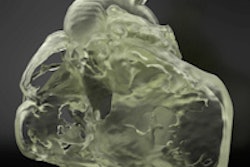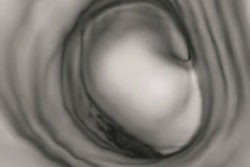"The phantom has been redesigned a few times and is mainly used for experiments and workflow optimization," study presenter Philipp Mann, from the German Cancer Research Center in Heidelberg, told AuntMinnie.com. "So far, it is not used on a daily basis for quality checks. We like to use the complexity of the phantom for research for now."
The phantom is contained within a polymethylmethacrylate box that can be filled with different liquids and radioactive tracers to simulate background signal. Refillable inserts are designed to simulate the bladder, thigh bones, and prostate. There is also an insert for an endorectal radiofrequency coil to perform MR spectroscopy testing.
Mann and colleagues created the inserts using 3D printing based on computer-aided design models or MRI data from healthy volunteers.
The phantom will be available for purchase directly from the German Cancer Research Center or by acquiring a license, which gives permission to manufacture the phantom.
"We are still figuring out the exact terms of conditions, since we recently finished our final update," Mann said.
Currently, there are different companies that manufacture various parts of the phantom, and the researchers are now "in close contact" with potential distributors, he added.



















